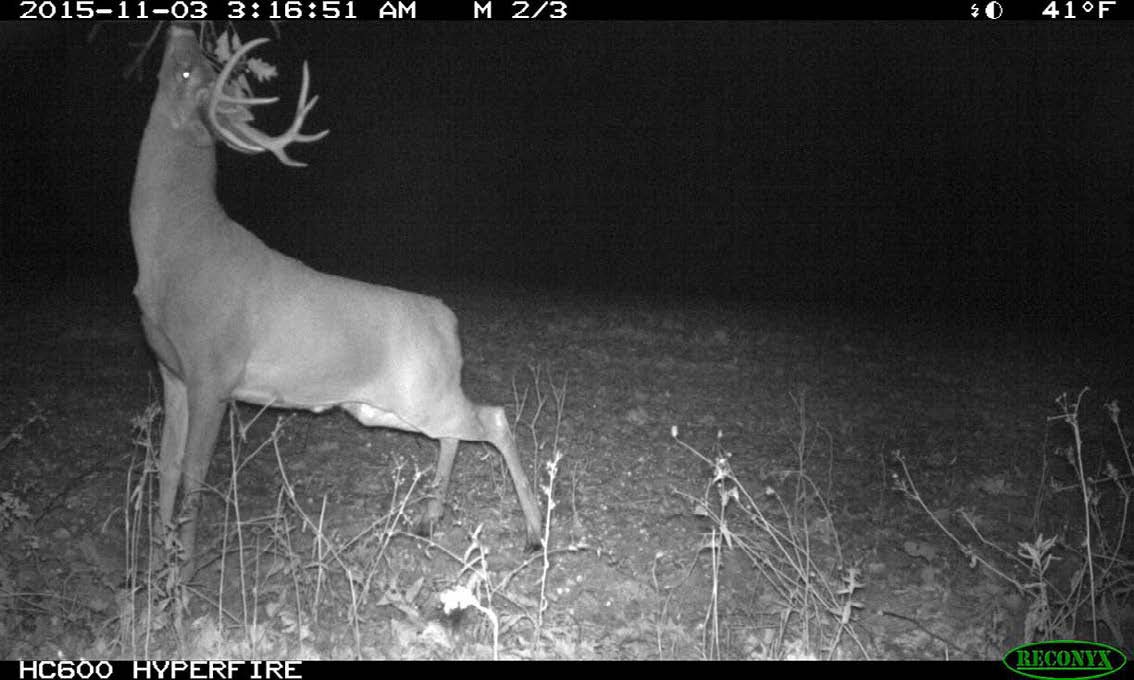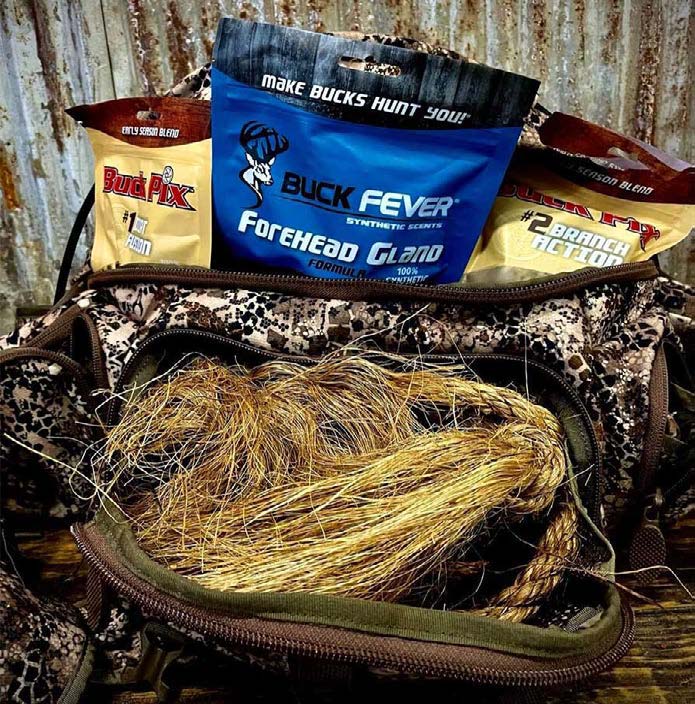Photos by Jason Ashe
As fall rolls around, every Whitetail deer hunter has one thing on the brain—the rut.
I know that starting about in September, that’s all I can think about here in Ohio. I check off all my honey-do list projects so that I can focus all my time from October through December on Whitetail deer.
The first week of October is when I make sure all my rut stands and spots are good to go for the upcoming rut. This is also the time I like to make my mock scrapes. I put them in specific spots, put a cell camera on them, and let nature do its magic. Magic is definitely what it is, since you will be able to inventory the bucks in your area this way. I don’t mess with them again until I head into the woods and hunt. That’s when I swap out SD cards, freshen them up, and look forward to what they hold.
Use of Scrapes
Let’s start with a definition of a scrape and why deer use it. To me, I look at a scrape as the cell phone of deer. It’s one of the primary ways they communicate during the rut.
There are two different kinds of scrapes: rut scrapes and community scrapes. Here, we’ll focus on rut scrapes that are made in the fall. Community scrapes get used year-round.
A mature buck will use a scrape to let other bucks know he is around. This is one way they establish dominance (along with rubs and sparring). All the other bucks passing through the area will then make their mark on the scrape, too, letting each buck know who’s who and where he stands in the pecking order.
I have seen does use the licking branch of a scrape, but never have seen them paw the dirt or urinate in it. Bucks will nibble on the licking branch and thrash their antlers on it, leaving a preorbital scent. They will also paw at the dirt in the bottom and urinate in the scrape.

Scrape Anatomy
The anatomy of a scrape is quite simple. You have the pawed dirt at the bottom and a licking branch hanging over it. I think the pawed dirt part is the easiest part of a scrape to identify, as it will be bare dirt. As you walk a fence row or walk in the woods, look for bare spots of dirt. If you find them with a branch over the top, look for paw marks. You have found a natural scrape.
This is how I believe bucks establish a pecking order of who’s breeding the does in that area and who needs to move on. In my area, bucks will work rut scrapes from October to December. You may find one scrape in an area or several. If you find several, this is referred to as a scrape line. This is a great place to set up near for a hunt. Some believe each buck makes his own scrape, which is why you get several in a row, but no one really knows for sure. While there are people out there who have shot bucks over scrapes, it’s not a common occurrence. Research has shown that most scrape activity (around 85%) happens overnight. In the hundreds of trail camera videos and pictures I have collected in the last five years, only 10 have bucks working scrapes during shooting hours. So, don’t set up stands over scrapes. Instead, position them between scrapes and doe bedding areas or food sources.
I like to try to capitalize on a buck moving in a transition area while he is checking for hot does.
An Introduction
Making a mock scrape is a way of introducing a new buck into the area. This makes all the other bucks curious, since they have not seen this buck around, but to them, he is scraping in their core areas.
This may make more bucks in your area visible during shooting hours as they also look for the new buck to challenge. This is especially true as the testosterone builds and they look for the first does to come into estrus.
Last year, after making a few mock scrapes in key areas, I had several different target bucks.
On one of my mock scrape sites between October 10 and November 22 last year, I had over 13 different bucks visit. That’s 13 different bucks that had key features I could pick out to identify them. There have been several rounds of sparring I have captured in front of scrapes on my cameras, too. Last year, I even found two tines that had broken off near a scrape!

Needed Tools
The things you need to create a mock scrape are pretty simple. There are several specialty tools on the market that can be used to make a scrape, but I never bought into using them. I use a metal rake, trail camera, pair of gloves (so as not to leave any human scent) and a few different deer scents.
I first find the perfect tree in an area. Some people will cut down a branch and use something to tie it to another branch. I don’t do this because I believe it leaves more scent and is not natural. After finding the right tree, I clear the area underneath it covering about a 4-foot by 4-foot area. I take the ground down to bare dirt. I then use Apparition Scents’ “Undertaker” and “Nightmare” scents. This is scrape dirt and a preorbital scent. I have tried several products, but these are the ones I prefer.
I then sprinkle in the dirt, which is natural scrape dirt, and then cover the licking branch with preorbital. I like to hang two cameras, one in each direction facing the scrape. I put one on picture mode and one on video. I do this to try to figure out which way the buck is moving to get a better idea if I need to move stands. I love the video mode, especially on my exodus trek cameras, because you can hear the fight!
I like to make my scrapes in areas that are high-traffic doe areas. I do this because as a buck is scent-checking for does, I think I have a better chance of him stopping by there in daylight hours. This situation could be different for areas that don’t see as much pressure as mine. We have about five bow hunters per square mile in my area of Ohio, and just getting permission can be tough.
There are several other products available for scrapes, from urine to scrape drip kits. A quick Google search will show you several products. Just make sure they are legal to use in your area.
I have also made scrapes with no scent and have had just as much success. I try to keep my scrapes simple and low-impact. Then all I have to do is freshen it up when I swap SD cards.
I hope this information helps some of you who have never made a mock scrape. I also hope those who have can take some benefit away from this report. Making mock scrapes has been the easiest thing I have found to draw bucks in without scaring them off and doing so makes for some great trail camera footage.
Good luck this season, and most of all enjoy it! I believe as long as you put meat in the freezer and enjoy your time outdoors, that’s all that matters.











































